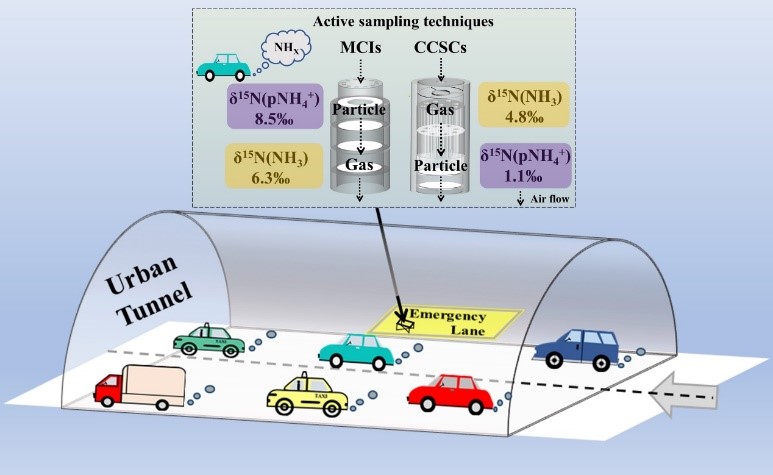Characterizing the Nitrogen Isotope Composition of Ammonia from Vehicular Exhaust using Active Sampling Techniques
Global anthropogenic emissions of ammonia (NH3) has increased significantly in the recent years. In urban regions, emerging evidence suggests that vehicle emissions are an important source of NH3, which is an unintended consequence of the introduction of three-way catalytic converters or selective catalytic reduction equipped on gasoline/diesel vehicles to reduce NOx emission.
Stable nitrogen isotope (δ15N) is a promising tool to quantify air NH3 sources. While the large range of nitrogen isotopic composition of vehicle emissions from previous studies make it difficult to accurately the contribution of vehicle emission to the urban NH3 budget. The large δ15N range may be due to lack of proper collection methods to capture NH3 for δ15N characterization.
Recently, a research group led by Prof. FANG Yunting from the Institute of Applied Ecology (IAE) of the Chinese Academy of Sciences (CAS) first deployed two types of active sampling techniques with different sampling orders between vehicular exhaust NH3 and particulate ammonium (pNH4+) collection in a long urban tunnel of Shenyang, China.
The researchers found that there was no significant difference in tunnel NH3 concentrations and smaller absolute δ15N-NH3 difference (on average 1.5 ‰) between the two types of samplers.
They confirmed that the reliable results from active sampling techniques. They also demonstrated the reason for the minor δ15N difference is likely attributable to the NHx (NH3+ pNH4+) collection efficiency and sampling filters affected artifacts in NHx speciation measurement using two opposite active sampling order methods.
The δ15N of 6.3 ‰ was recommended by the researchers to be a representative value of the vehicle NH3 emission isotopic signature for tracking vehicle emission contributions to urban atmospheric NH3 concentrations.
This research has significant reference value for the future NH3 source apportionment and mitigation strategy making on NH3-related haze pollution.
The study entitled "15N natural abundance of vehicular exhaust ammonia, quantified by active sampling techniques" has been published in Atmospheric Environment.
The research was supported by the National Key R&D Program of China and the National Research Program for Key Issues in Air Pollution Control.

Fig.1 δ15N signatures of NHx from vehicle emissions quantified by active sampling techniques (Image by SONG Linlin).
Contact
YUE Qian
Institute of Applied Ecology, Chinese Academy of Sciences
Tel: 86-24-83970324
E-mail: yueqian@iae.ac.cn



